Everything about the planet Jupiter
Everything about the planet Jupiter 1. The inner core of Jupiter 2. The atmosphere of Jupiter 3. Jupiter’s gravity and the length of a day on Jupiter 4. Moons of Jupiter 5. Jupiter’s ring 6. Explorers to Jupiter 7. Current ongoing and upcoming missions
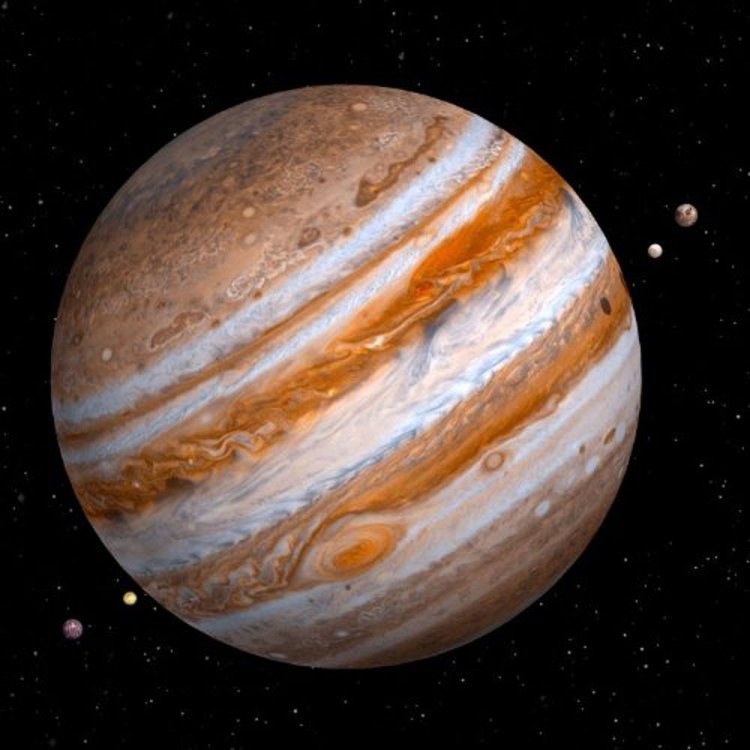
EVERYTHING ABOUT THE PLANET JUPITER
Jupiter is the largest planet in the whole solar system and also the fifth planet from the sun. It has a mass of 1.9 x 10^27 kg that means if Jupiter were hollow, it can fit more than one thousand earth. Here are the fundamental information about Jupiter
Equatorial radius-71,492 km
Mean density – 1.33 gm/cm3
Mean distance from sun- 778,412,020 km
Rotational period-9.9 hours
Orbital period- 11.86 years
Atmospheric pressure- 0.7 bars
Wanna know more about the enormous planet, then check out this article that explains everything about the planet Jupiter 1. The inner core of Jupiter 2. The atmosphere of Jupiter 3. Jupiter’s gravity and the length of a day on Jupiter 4. Moons of Jupiter 5. Jupiter’s ring
1. Inner core of Jupiter
As we mentioned, Jupiter is far away from the sun, hence it gets only a small amount of heat. Its surface temperature is around -148 degrees celsius and believed that the surface is covered with a thick mass of ice that never melts. Earlier, Jupiter was known as a ‘Gas giant’ due to the uncertainty that solid remains below the ice surface. Then, most of the astronomers came to the conclusion that the inner core of Jupiter is composed of hot molten material. But how the surface be cold when the core is extremely hot? Some theories claimed that an insulating material remains between those layers, and some others asserted that there’s a layer of water.
2. Atmosphere of Jupiter
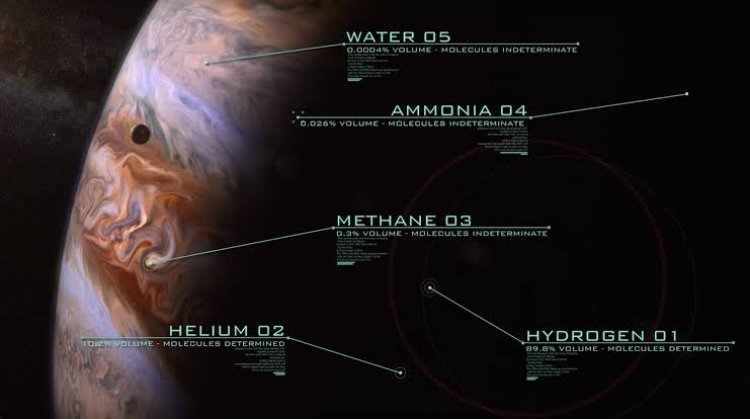
Jupiter’s atmosphere is very dense and it is composed of mainly hydrogen and helium like the sun. There are also small amounts of methane, water vapor, ammonia, and other components. The pressure is high when moves down to the bottom, hence the hydrogen atoms are broken up and electrons are released. As a result, the resultant atoms comprise bare protons that eventually produce a state in which the hydrogen becomes metallic.
3. Jupiter’s Gravity and the length of a day on Jupiter
Due to the tremendous size of Jupiter, its gravitational attraction is 2.64 times greater than that on Earth. This suggests that a person who weighed 90 kilograms would weigh 240 kilograms on Jupiter. Due to this high gravity pull, it needs much more power to take off a spaceship from Jupiter than it does from the Earth.
Even though Jupiter is the largest among other planets, it has the shortest day as measured according to the earth's time. Hence, 9 hours and 55 minutes is the time span of a day on Jupiter.
4. Moons of Jupiter
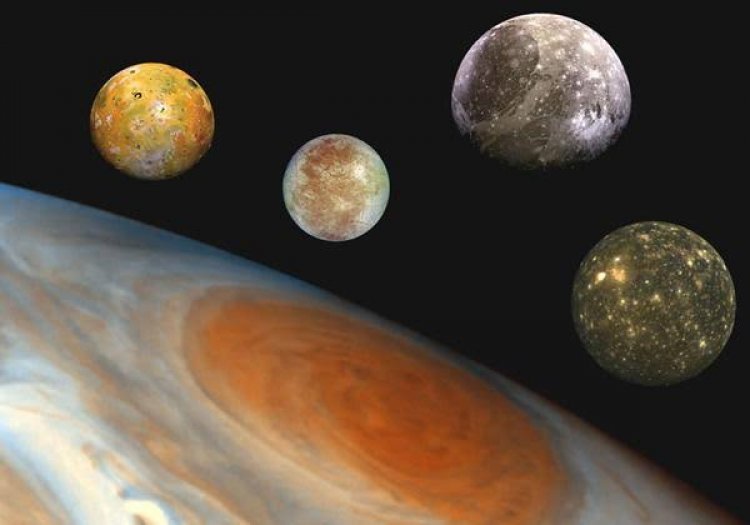
In 1610, Galileo Galilei discovered four moons that look like stars through his homemade telescope. Later, he concluded that they weren’t stars but planetary bodies in orbit around Jupiter which eventually came to know as Galilean satellites. In 1892, dozen more small moons have been discovered and now Jupiter has 79 moons in which 53 of them are named. As all these moons are orbiting it, Jupiter is really like a miniature satellite system which is called the Jovian system. The four largest moons among those 79 moons are lo, Europa, Ganymede, and Callisto.
5. Jupiter’s rings
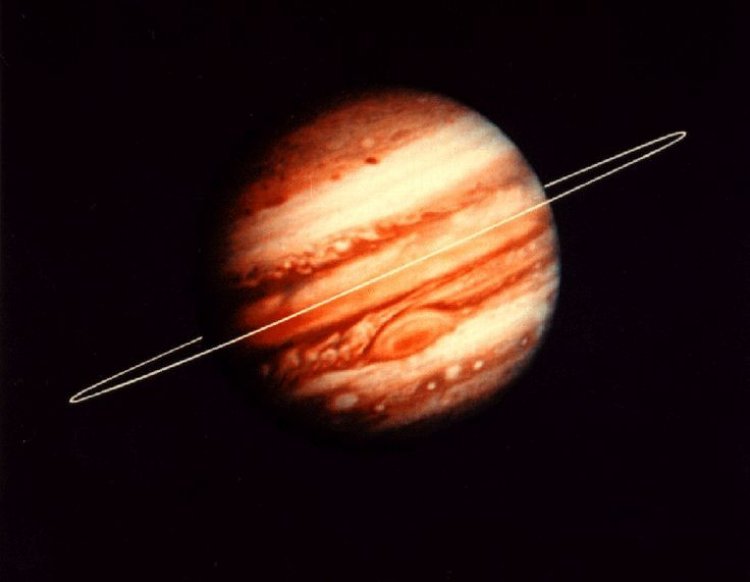
Jupiter has a simple ring system whereas Saturn has complex ring patterns. Jupiter’s rings are composed of an inner halo, the main ring, and a Gossamer ring, and the Gossamer ring has two rings in which one ring is embedded within the other ring. All these rings are long and thin that is composed of dust particles kicked up as meteoroids bang into Jupiter’s four inner moons. Most of these particles are microscopic in size.
6. Explorers to Jupiter
The pioneer program(1973 and 1974) was to examine the planet’s atmosphere and satellites, thus it was the first spacecraft to visit Jupiter. Voyager 1 and 2(1979) discovered the presence of thin rings around the planet and Ulysses of 1992 got detailed information about the planet's magnetosphere even though its primary mission was to explore the sun. Cassini(2000) had the closest approach and fetched a true color mosaic picture of the gas giant. New Horizons(2007) had detailed observations on Jupiter’s atmosphere, moons, rings, etc. in addition to its expedition to Pluto. Galileo that orbited 8 years found liquid presence under the planet's icy surface and in its moons Ganymede and Callisto also, measured atmospheric elements.
7. Current ongoing and Upcoming missions
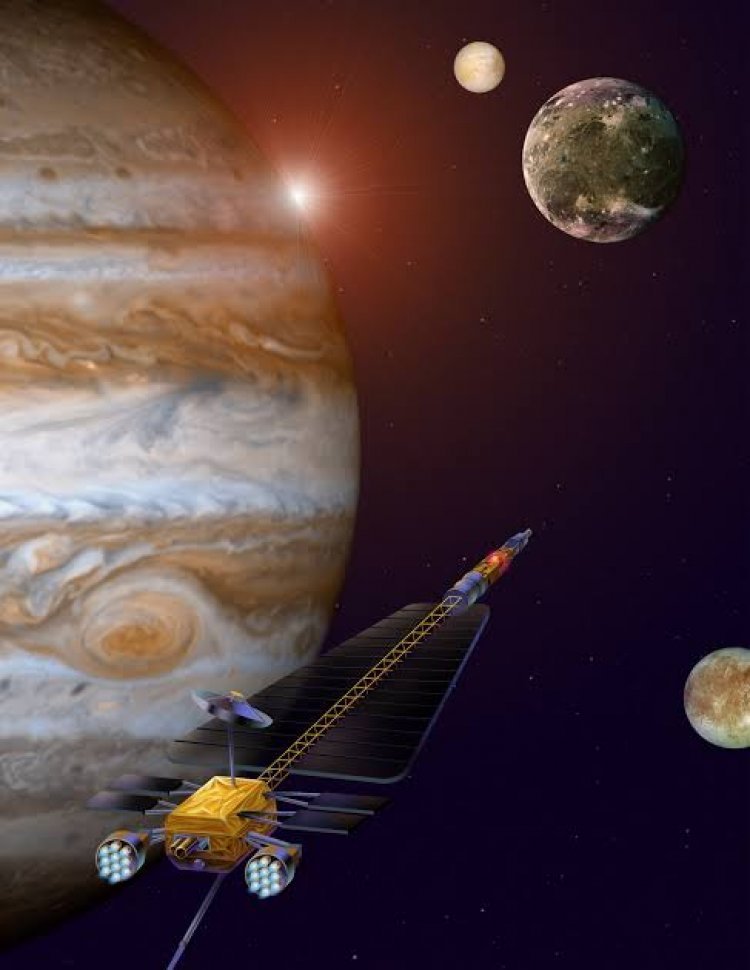
Jupiter ICy moons Explorer(JUICE) is a mission plan of the European Space Agency that is scheduled to launch from 26 August to 15 September 2022. It would end by June 2033 in which 7.6 years would be spared for its cruise. The purpose of JUICE is to make flybys of its satellites Ganymede, Callisto, and Europa to optimize the orbit, icy moons of these satellites and to complete the science objectives like the study of physical properties of icy crusts, investigation of the exosphere, etc.
Among the studies related to Earth, Sun, and Moon, the role that Jupiter plays should also be recognized.

















